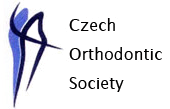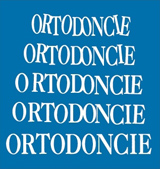| Invitation | |
| Main Information | |
| Congress Venue | |
| Congress Course | |
| Keynote lectures | |
| Registration | |
| Visa requirements | |
| Accommodation | |
| Documents | |
| Contacts | |
|
|
|
About Brno
|
|
|
|
|
 The Congress is organised by the Czech Orthodontic Society |
|
Upper Respiratory Tract and Orthodontics
René Foltán
Keynote lecture

About author:
He completed the studies of Dentistry at the Faculty of Medicine, Charles University in Hradec Královéin 1993 and the studies of General Medicine at the same faculty in 1998. Ever since 1994 ha has been working full time at the Department of Dentistry of the 1st Faculty of Medicine, Charles University and the General University Hospital in Prague, now he is the Head of the Department. Since 1996 he has had a private practice focused on oral and maxillofacial surgery. In the past he worked at university hospitals in Zürich, Switzerland and at the Department of Oral and Maxillofacial Surgery in Guildford, England. He is a lecturer in postgraduate courses of oral and maxillofacial surgery of the Charles University and the Institute for Postgraduate Medical Education. He is the author of many national as well as international publications.
Abstract of the lecture:
Functionally, the nature of our occupation makes us perceive the oral cavity and the surrounding area mostly only as the beginning of the gastrointestinal tract. It is, however, also the beginning of the respiratory tract and the upper respiratory tract (hereinafter referred to as the URT) should be included in our diagnostic and therapeutic considerations. Most information on the URT function was obtained during the last 30 years through studying sleep related breathing disorders, of which the most common is the obstructive sleep apnea (hereinafter referred to as the OSA).
OSA is a multifactorial disorder affecting up to 14% of adult men and 5% of adult women, but it is not rare even in paediatric population,with prevalence of 1.5-6% in dependence on different literature sources.Thus, it represents a potentially big issue, not only medical, but also social and economic. It means that the breathing stops repeatedly (more than 5 times per hour of sleep) for more than 10 seconds due to upper airway obstruction during sleep,with the same breathing effort. These apneas are accompanied by varying degree of oxygen desaturation and lead to a whole range of other diseases from hypertension to neurological disorders.
The collapse of the upper respiratory tract has numerous causes and to see OSA as an anatomic disease only would be a mistake.
The role of an orthodontist in this disease and URT management is irreplaceable. The orthodontist is involved in primary detection, diagnosis as well as treatment of OSA. The lecture will focus on basic screening techniques and URT examination which may be done using standard initial orthodontic documentation. We will also zero in on simple screening methods in patients with suspected OSA.
OSA therapy must be indicated in dependence on its severitywhich is assessed based on the average number of apneas per hour of sleep – AHI (Apnea/Hypopnea Index) or based on apneas accompanied by oxygen desaturation - RDI (Respiratory Disturbance Index). In this perspective, indications for basic orthodontic procedures will be discussed such as extraction therapy, RME or SARME and/or maxillomandibular advancement.
Back to the list of keynote lectures 



